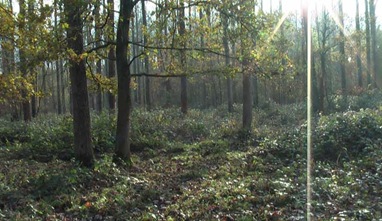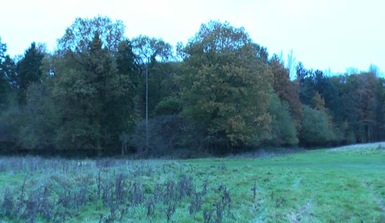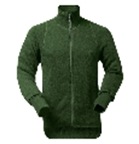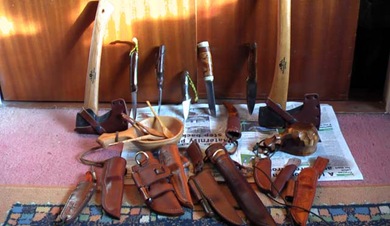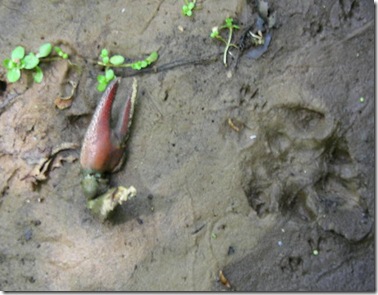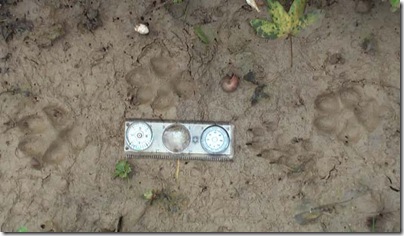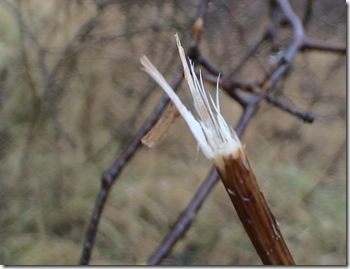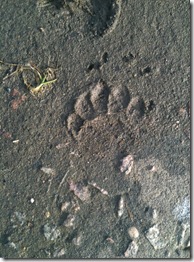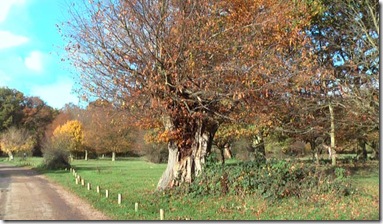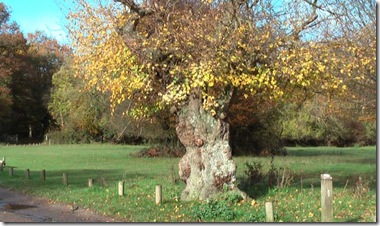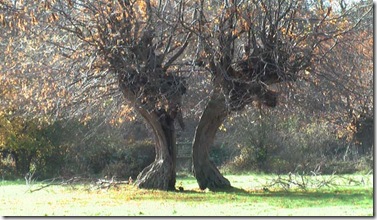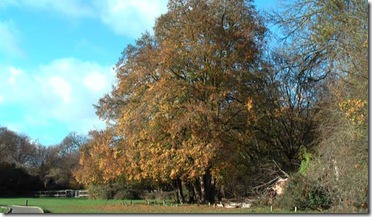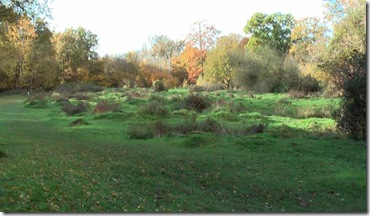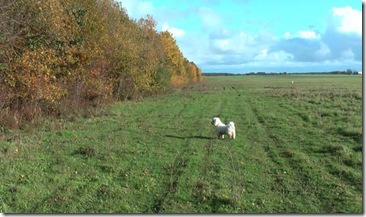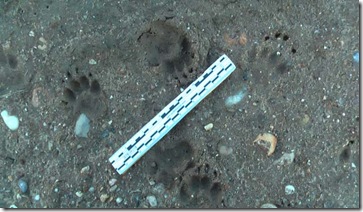This time last year I was in Namibia. This article appeared in the September issue of Bushcraft and Survival Skills magazine. I also wrote a Wildlife article which is now a sample article on the website. I hope you enjoy them.
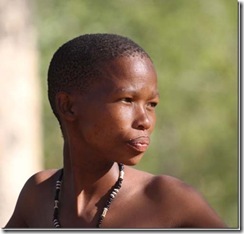
There is a slight debate whether the words “San” and “Bushman” are acceptable. Some say the word “San” is derived from a name applied by a rival tribe meaning “outsider”. Others maintain it simply means “forager”. The Khoisan speaking peoples have agreed that, collectively, San is acceptable to those who are not Khoisan speakers. There’s a simple way to address all this. Call them by what they want to be called, and after reading this article, you might see why.
The people in North East Namibia call themselves Ju/’hoansi (pronounced ‘zshu-wansi’), meaning ‘The Real People’ and they really are the real people. They are the indigenous people of Africa with an ancient past and no written history apart from some rock paintings. They were considered vermin and a threat to livestock for the 350 years after those European settlers landed on the African shores and, sadly, they were killed in great numbers.
Today the Ju/’hoansi (the ‘/’ is one of four symbols denoting a click – in this instance a ‘Zshu’ sound) are still on the edge of cultural extinction despite being intensively studied by anthropologists as one of the last hunter gatherer peoples in the world.
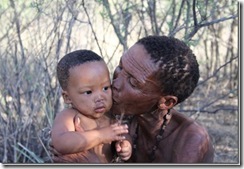
Hunter gatherer societies were the norm until some 10,000 years ago when we adopted agriculture. Ironically, the Ju/’hoansi are restricted from hunting today. Official sources say that they are allowed but they need a permit to do so, which in turn requires a passport. A trip to the passport office is not exactly easy over here.
They have been pushed into ever smaller areas but now, at least, they retain an element of solitude on what is their ancestral land; the Kalahari bushvelt. It doesn’t mean they are left alone. As recently as November 2009, cow herders broke down the fencing and allowed cattle to graze on the Ju/’hoansi’s land. Spokespeople for the tribes have been quoted as saying; “We Bushmen [sic]; we were the first people here, so how come we are the last in line to get anything?”
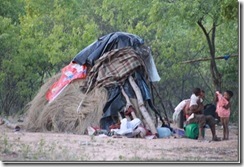
In the north east of Namibia, the north western part of the Kalahari begins. It reaches into east into Botswana and south into South Africa and borders on Angola and Zambia. This is the land “allocated” to the group of peoples collectively known as the San. After 30 minutes driving along a soft, sand track we came to a halt in the village and were immediately greeted by a number of the Ju/’hoansi.
It was no surprise to see that the ‘new’ village wasn’t too far removed from the grass shelters we would be building later. Only the school house seemed to be a permanent structure as we know it – and there was a generator for pumping water and supplying electricity to the school. It was also no surprise that they were not in traditional attire. This would be saved for when they visited us at our camp or when working at the traditional village.

The Ju/’hoansi (keep saying it, it will become easier) were grinning. They never stopped grinning and laughing. Maybe it was the thought of soon being able to have access to a cup of tea with 6 sugars, packets of sweets that we bought from a supermarket on the way and their favourite western food, porridge (with maple syrup of course).
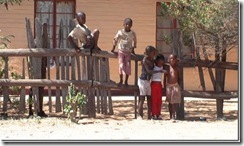
They are classed as a peaceful society. They avoid conflict and everything is done by discussion with minimal argument. Even when we were tracking, it was a consensus between the trackers that determined what the animal had done and where it had gone.
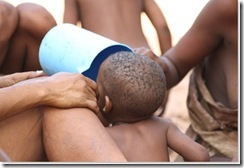
We started our 5-days with the Ju/’hoansi explaining that we wanted to learn the fundamentals of how they traditionally lived. We wanted to learn how to build their shelters, how they foraged and cooked their food, and most importantly for me, how they tracked their prey and hunted using their traditional hunting sets.
They walked the mile to our camp every morning for their cup of tea. Depending on the task in hand, we either followed them into the bush or they led us to the traditional village. They were hard task masters and we copied everything they showed us. They knew when we were really struggling and took over the task but not after reprimanding us in a friendly way, which usually ended up with all of us in fits of laughter. They were great teachers and knew what we wanted to learn.
We were warned that one particular day, we would have to walk quite a way to retrieve a root bark for our quivers. We loaded up our backpacks with water and provisions only to see the Ju/’hoansi pointing at our vehicle. We quickly got the idea and soon, complete with a dozen exited and chattering Ju/’hoansi clambering in, around and on the Land Cruiser, we started along the sand tracks to our destination – a sight I regret not being in a position to photograph. It brought a new meaning to the term ‘joy-riding’!
What really struck me was their sense of humour. One of them tied a stick to the back of his friend’s loin-cloth. After shouting what could only be interpreted as ’snake’, the unfortunate fellow leapt up and ran around in panic looking behind himself as the stick followed him everywhere he went!
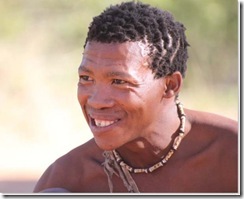
Shelter
The priorities for survival in the bush are not that far removed from a temperate climate which may seem to be a strange comment but bear with me. As with most places the first thing you will need is protection from the elements. Of course the shelter is not to protect from cold, wet and wind, but to protect you from the sun. Having said that, temperatures can drop to below freezing in the Namibian winter and there can be vicious downpours and storms (we experienced that as well) so it’s equally important to be aware of this. In the shade the temperature can be 10 degrees Celsius (50F) lower than in standing in the full sun. The first task then was to build a shelter.

Under instruction from the Ju/’hoansi we constructed a permanent looking shelter in the shape of a wikiup. The difference with this one was that holes were dug into the sand up to elbow deep. 8 or so poles were embedded into the holes around the circumference of the shelter giving a good solid foundation to the structure. The sand was excavated with our hands after a digging stick (our first tool made out of a sickle bush branch) had softened up the sand.
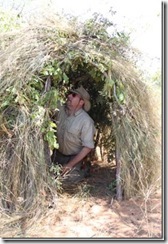
The limbs were interwoven with smaller branches and finally the whole structure was covered with dry grass, again woven into the structure (both inside and out). We were instructed to leave some gaps to allow what draught there was to vent the shelter. It was remarkably cool inside.
Hunting set
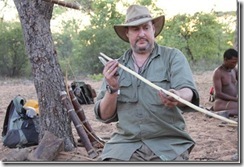
The construction of a hunting set was next. A lot of time was spent gathering the correct wood for the correct part of the set. The bow was made out of a raison bush branch and the quiver was made from the root bark of the false umbrella thorn.
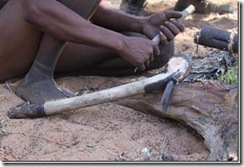
The main tool used by the bushmen was the axe or “chop-chop.” This brilliant tool could be converted into an adze by simply removing the axe head and turning it 90 degrees. A double-edged knife was also used, but my mentor, Kgau, usually signaled that he wanted to use my Clipper knife.
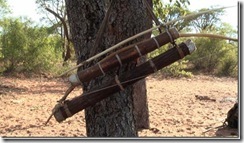
To make the quiver, we built a fire and placed the root, which had been cut to size, in the hot embers and sand for about 2-3 hours. After thinning out both ends of the quiver, the wood was then battered on its end onto a stone to dislodge the inner wood from the outer bark. The inner was finally separated from the outer bark with a bit of pulling. This enabled the now hollow outer bark to be used as a receptacle for the arrows and the hand drill. Damp antelope skin was tied over the ends of the bark, cut to shape and allowed to dry. Finally, a shoulder strap made out of hide was put on the quiver ends and one end was prised open to create the cap.
The arrows are a three stage affair with the tip part able to come way from the main shaft. We had to file the tips to shape. It is the tip shaft (just behind the tip) that contains the poison. Interestingly, there were no flights to the arrow and you have to get extremely close to hit the target; an example of their exceptional tracking and stalking skills.
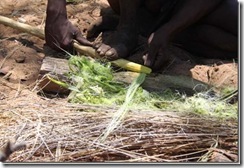
The bow string was made from Sanseveria, more commonly known as mother-in-law’s tongue. The pulp is removed by scraping it away with the sharp edge of the digging stick until the stringy remains can be twisted into cordage in much the same way as we make nettle or willow cordage. The removal of the pulp takes a great deal of effort (believe me) and there is a technique to be mastered (which I didn’t master at all and got told off for slacking!) Giraffe tendon was also used as cordage particularly to reinforce some of the arrow parts.
While selecting the appropriate materials over the 5 days, we dug and dug and dug. The digging stick was the most useful of tools. Most of the food was found under ground like the bush potato and bush cucumber and the wonderful water root plant. The women were especially highly skilled in spotting the slightest sign of growth above ground. It was then a case of digging to see if the root was good enough to eat. Not surprisingly, there was a lack of berries as I expect most had already been foraged.
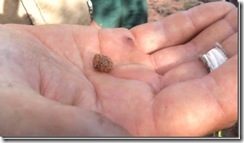
Even the poison for the arrows was to be found underground. The cocoons containing the larvae of the Diamphidia beetle are found quite deep underneath the Commiphora bush which hosts the beetle. Great care was taken when digging the things up. We only found a dried up larvae, but it gave us an idea of what was involved.
The poison on the arrow will slowly poison the quarry and the tracking skills of the hunter will come to the fore to find the dying animal. This may take a few days and I was left wondering why a more efficient hunting system with more powerful bows had not been developed. But, as a tracker, I pleased this hadn’t happened otherwise the tracking skills would have been long lost – much like ours.
After 4 days of foraging, making a shelter, making a hunting set, making traps and tracking antelope we went on to the final task. Whenever the Ju/’hoansi settled down to work, they built a fire. This is the second survival priority and essential to us to boil water, an absolute necessity in the Kalahari. They are so well adapted to the arid climate they need very little water, usually taking it from plants and caches. They will use the fire more for cooking, to provide warmth during the evening, for their rituals and assistance in making their tools.
We foraged for the appropriate wood and cut two sticks each, which were soon whittled into a drill and a hearth. Dried grass was prepared and we were off! Fire by friction – the hand-drill way! If you can’t do this in the Kalahari, then you can’t do it anywhere – nevertheless I didn’t find it easy. I noted that for the bushmen (and women – as they make fire as well) it’s a team effort, taking turns in drilling. They shout encouragement to each other and to the fire: “Ka! Ka! Ka!” They encouraged the ember by saying, “Come on fire – hurry, hurry”.
Eventually, the fire did come for all of us and with shouts of “Gaja – Gaja!” (great – good – well done) we sat back and grinned and watched these ancient peoples nodded their head in approval and pride at their protégées success.
End
They were truly amazed by some of the carefully selected gifts we handed to them at the end of the 5 days. String, batteries, wind up torches, a mirror and clothes were all welcome. I gave my new found tracker pal – who had named me /Ui (zchwee – meaning a degree of permanence, a reference to my stocky stature, a titanium folding spoon and a single cell torch which he had been eyeing up for the last few days, which he immediately put in his shoulder bag. In exchange we bought their jewellery and bush tools – a major source of income for them to subsidise their yearly income from the hunting concession.
I can only thank them for their hospitality, which I know they will never hear or never see.
I can also categorically say that all the time I can write and all the time people want to read what I write, the bushmen will from now on always have a name; a real name for real people.
